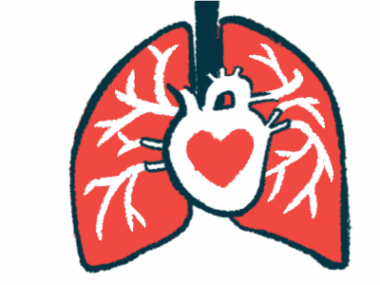Iron Infusions Trigger PCT in Woman with Rare UROD Mutation
Written by |

Regular iron infusions given to treat anemia caused a woman with a rare mutation in the uroporphyrinogen decarboxylase (UROD) gene to develop porphyria cutanea tarda (PCT).
Her case was described in the report, “Iatrogenic Iron Overload Causing Porphyria Cutanea Tarda in a Patient With a Rare Nonsense Heterozygous UROD Gene Mutation,” was published in the Cureus Journal of Medical Science.
PCT is a form of porphyria characterized by skin blisters and painful lesions on areas exposed to the sun, and can also be marked by hyperpigmentation, skin thickening, and excessive facial hair. The disorder is caused by the buildup of a molecule called uroporphyrinogen, due to low levels of the enzyme UROD in the liver.
Uroporphyrinogen is converted to uroporphyrin, a type of porphyrin, which in the presence of sunlight triggers an immune reaction that leads to skin blistering.
In the majority of PCT cases, the condition is caused by viruses and compounds that affect liver function, such as alcohol and iron in excess. However, about 15% to 50% of cases are caused by familial — meaning inherited — mutations in the UROD gene.
“Most patients with familial PCT do not have an affected parent,” the report noted.
Scientists the University of North Dakota School of Medicine and Sanford Health described the case of a 61-year-old woman with anemia caused by kidney disease, whose PCT symptoms were triggered after frequent iron infusions.
The woman went to their hospital’s emergency room complaining of blisters on the back of her hands and itchiness. She had a clinical history of anemia caused by chronic kidney disease and end-stage renal disease that required hemodialysis to filter wastes that her kidneys were no longer removing.
She was treated conservatively with a combination of corticosteroids and antihistamines, but three weeks later returned because her rash had worsened and she experienced facial swelling. She was admitted, and a biopsy and blood tests were performed.
The biopsy revealed the presence of certain features, such as the buildup of antibodies, that led doctors to suspect porphyria cutanea tarda. Blood tests showed high levels of uroporphyrins, 34.6 micrograms per deciliter (ug/dL; normal value less than 0.1 ug/dL), and of total porphyrins, 253 ug/dL (normal value less than 0.1 ug/dL).
Compared to a photograph in her chart, the woman’s skin appeared significantly darker, which can be caused by excessive iron levels. Considering that she had received iron infusions every two weeks for 11 months, her previous iron measures were checked. They showed high levels of ferritin (a protein that contains iron) and total iron-binding capacity, a measure of the blood’s ability to bind and transport iron.
A scan of her abdomen also showed iron overload in the liver and spleen. The concentration of iron in the liver was found to be 148 micromol/g (iron concentration in the liver is normally less than 36 micromol/g).
Genetic testing was done to determine if hereditary hemochromatosis (iron overload) could be the cause of the excessive iron levels. This condition is caused by mutations in the HFE gene, and is characterized by iron overload and organ damage. Tests here came back negative.
But further genetic analysis identified a rare heterozygous mutation, called c.616C>T, in the UROD gene. Heterozygous means that the mutation is present in only one of the two copies of the UROD gene. The mutation was predicted to result in a shorter, non-functional protein.
Researchers noted that “the mutation itself does not necessarily cause PCT; however, any condition that causes liver damage or iron overload can trigger PCT in the setting of decreased enzyme activity.”
The patient was started on a high dose of the anti-malarial agent hydroxychloroquine to lower her porphyrin levels, given twice a week. Her dose of erythropoietin, a medication used to increase blood hemoglobin levels in people with end-stage kidney disease and anemia, was increased to 500 micrograms twice a week, and she started taking deferoxamine to reduce her ferritin levels. She also discontinued regular iron infusions with hemodialysis.
This report details “a case of familial PCT caused by an iron overload due to regular iron infusions for the treatment of anemia in the setting of [chronic kidney disease]. This is the first known case of a patient with a rare heterozygous nonsense mutation of the UROD gene at a sequence variant designated c.616C>T,” the scientists wrote.
It “highlights the importance of recognizing the clinical manifestations of PCT, as well as factors, both environmental and iatrogenic [due to treatment], that may lead to its development,” they added. “Particular care must be taken in patients with a family history of PCT.”






